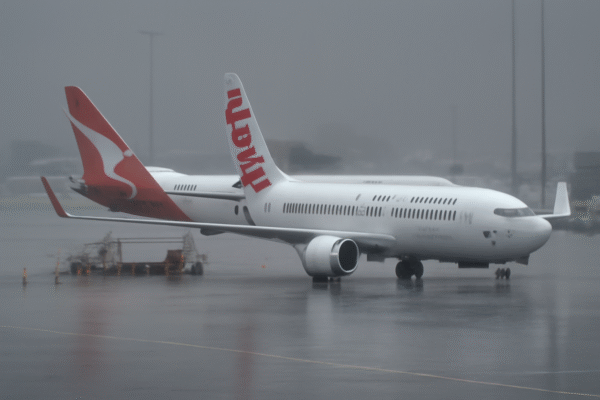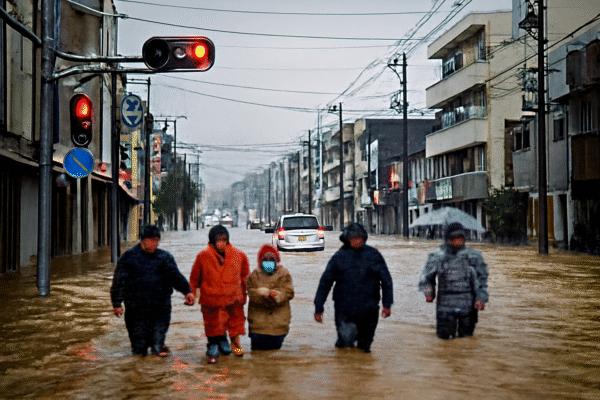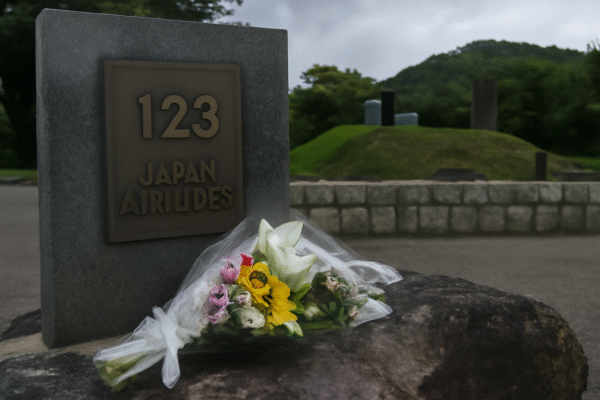On August 12, 1985, Japan Airlines Flight 123, a Boeing 747-100, tragically crashed between Tokyo Haneda Airport and Osaka Itami Airport, claiming 520 lives. This catastrophic event is one of the deadliest in aviation history, and its legacy continues to shape aviation safety practices globally. The lessons learned from this disaster underscore the importance of rigorous maintenance procedures and safety protocols, ensuring such a tragedy would never happen again.
The 40th Anniversary: Honoring the Victims and Their Legacy
The 40th anniversary of Flight 123’s crash remains a deeply emotional time for the victims’ families. As they continue to grieve, they work tirelessly to honor their loved ones by advocating for better safety standards. One prominent figure in this effort is Kuniko Miyajima, who, after losing her family in the crash, has dedicated her life to improving aviation safety. Through her tireless work, the Japan Airlines Safety Promotion Centre was established in 2006 near Haneda Airport to educate both the airline and the public about the importance of safety in air travel.
The commemoration of this event has brought forward a collection of personal stories in a publication titled After the Red Cloud. The title reflects the glowing sunset seen from the aircraft before the tragic descent, emphasizing the lasting emotional impact of the crash on families and their ongoing fight for aviation safety.
Kuniko Miyajima’s Efforts to Promote Aviation Safety
Kuniko Miyajima’s advocacy has been pivotal in driving change. Her work led to the establishment of the Japan Airlines Safety Promotion Centre, a critical institution dedicated to educating the public and industry professionals about the importance of maintenance, safety standards, and protocol adherence. By showcasing aircraft wreckages and past safety failures, the center has played an essential role in improving the airline industry’s focus on safety.
Furthermore, Miyajima’s influence extended to Japan Airlines’ own operational changes. Following the crash, the airline adopted more rigorous maintenance checks and implemented higher standards for airframe and component inspections. These changes laid the foundation for improved safety practices in the airline industry.
A Deep Dive into the Investigation: The Importance of Shared Responsibility
The investigation into the crash of Japan Airlines Flight 123 revealed a critical maintenance oversight, which led to the catastrophic failure of the aircraft. This oversight highlighted the broader issue of collaboration within the aviation safety network. Miyajima stressed that every individual in the aviation sector, from pilots to maintenance personnel, must prioritize safety and adhere to training standards.
Through her lectures to Japan Airlines employees, Miyajima emphasized the importance of working together, continually refining procedures, and attending to every detail in the safety protocol. She remains hopeful that the lessons learned from this tragedy will ensure future air travel remains safe for all passengers.
Japan Airlines: A Commitment to Safety and Service Excellence
Japan Airlines’ commitment to safety and customer service has been shaped by the lessons learned from Flight 123. Today, the airline remains a leader in the aviation industry, with comprehensive safety training and protocols in place. The airline’s emergency response training and efficient evacuation procedures have been recognized as exemplary, particularly following exercises like those at Haneda Airport.
Miyajima’s influence can be seen in the airline’s continued focus on passenger safety. She has played a key role in improving the airline’s emergency evacuation practices, ensuring that passengers are well-prepared in the event of an emergency. These measures are a direct result of the company’s dedication to learning from past mistakes and ensuring the safety of passengers today.
The Ongoing Legacy of Japan Airlines Flight 123
The legacy of Japan Airlines Flight 123 is not one of despair but of resilience and improvement. The advocacy led by Kuniko Miyajima and others has resulted in lasting changes in aviation safety worldwide. These changes, including better maintenance practices, improved crew training, and more comprehensive safety standards, have made air travel safer for millions of passengers.
As the 40th anniversary approaches, it is clear that the memory of Flight 123 continues to inspire positive change in the airline industry. While the tragedy remains a somber chapter in aviation history, its legacy serves as a reminder of the importance of safety and the ongoing work needed to prevent similar accidents from occurring in the future.
Conclusion: Honoring the Past, Securing the Future
The lessons from Japan Airlines Flight 123 have shaped the evolution of aviation safety standards, leading to stronger protocols, better training, and enhanced collaboration within the industry. While the pain of the tragedy still lingers for the families affected, their ongoing efforts to promote aviation safety ensure that their loved ones’ deaths were not in vain.
Japan Airlines, through its unwavering commitment to safety, continues to honor the memory of the 520 people who perished in the crash. With improvements in both operational safety and customer service, the airline has become a symbol of resilience and an example of how the aviation industry can grow stronger from its past mistakes.
For more travel news like this, keep reading Global Travel Wire















